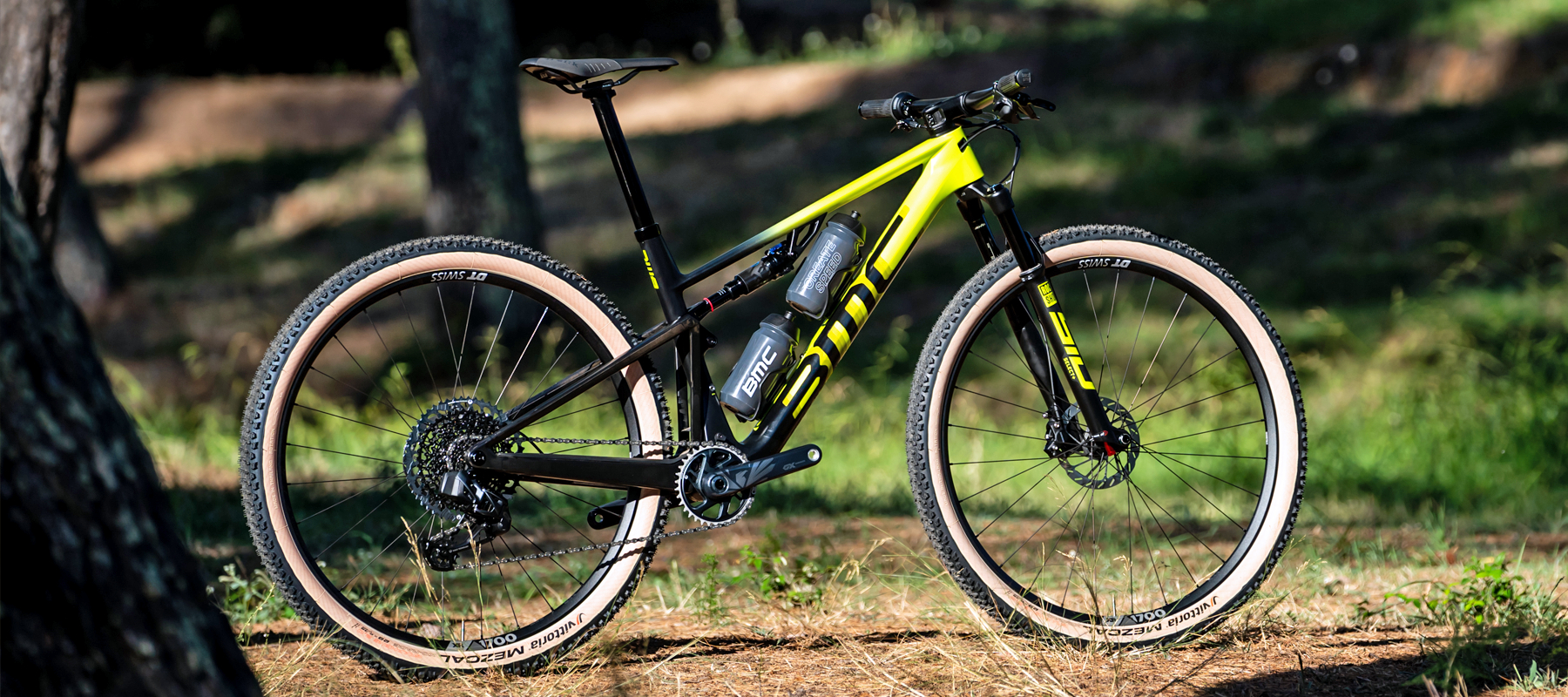Early Verdict
Dialed geometry makes the feature-rich Fourstroke a riot on the trail
Pros
- +
Agile yet predictable handling
- +
Confident straight-line speed
- +
Extremely quiet over rough terrain
- +
Autodrop dropper post just works
- +
Excellent electronic shifting
Cons
- -
SID SL fork is easily outridden by the frame
- -
Messy peddlers could struggle with the low bottom bracket
Why trust BikePerfect
When BMC launched the previous Fourstroke back in 2018 it was considerably more progressive than many of the other race-focused cross-country bikes around.
Even four years on, the geometry is still very much contemporary when compared to the best cross-country mountain bikes on the market, although many brands have since caught up. With the release of the new Fourstroke, BMC has once again pushed what is considered cross-country with radical new geometry and some interesting details, most notably a dropper that actually drops at the push of a button.
For information on Bike Perfect's testing procedures and how our scoring system works, see our how we test page.
We were lucky enough to get a first ride on the bike, warming up on the demanding French cross-country Olympic test track before taking it between the tape at Roc D’Azur.
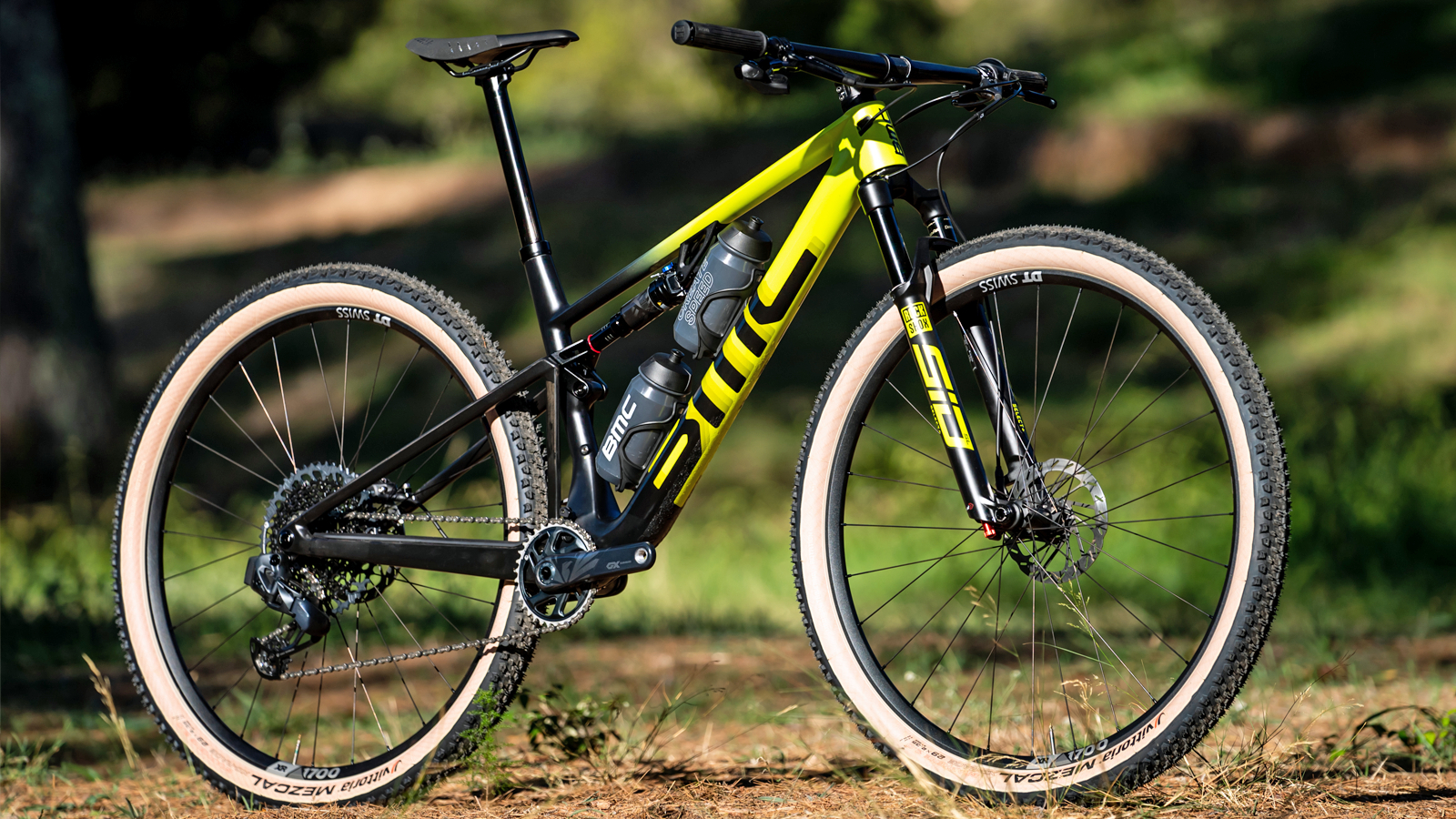
Design and specifications
The new Fourstroke 01 uses BMC’s premium carbon while the less race-focused Fourstroke options use a lower-grade fiber. What's shared across the Fourstroke range are the new geometry and APS kinematics, but first, let's talk about the Autodrop seatpost.
BMC started carving its own path with dropper technology when it released the previous Fourstroke, the RAD (Race Application Dropper) post used an integrated design in order to save weight, improve strength, and offered 80mm of travel.
The new Autodrop post has the same 80mm of travel and from the outside looks almost exactly the same as the old post with its oval tubes, but it has a party trick. The post can drop the seat at the push of a lever with no extra force required from the rider. BMC is claiming it to be the world’s first fully integrated, featherweight automatic dropper post.
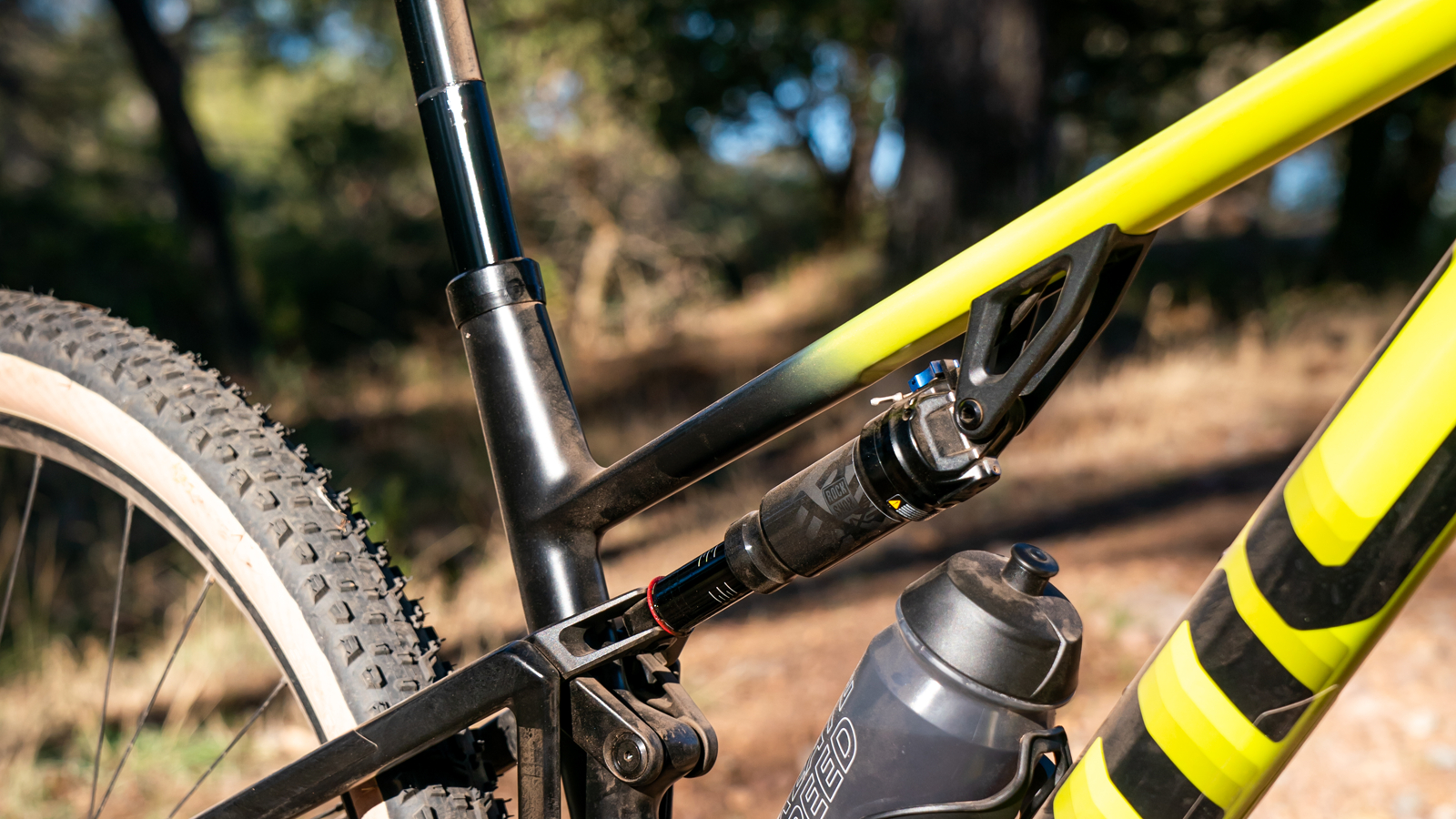
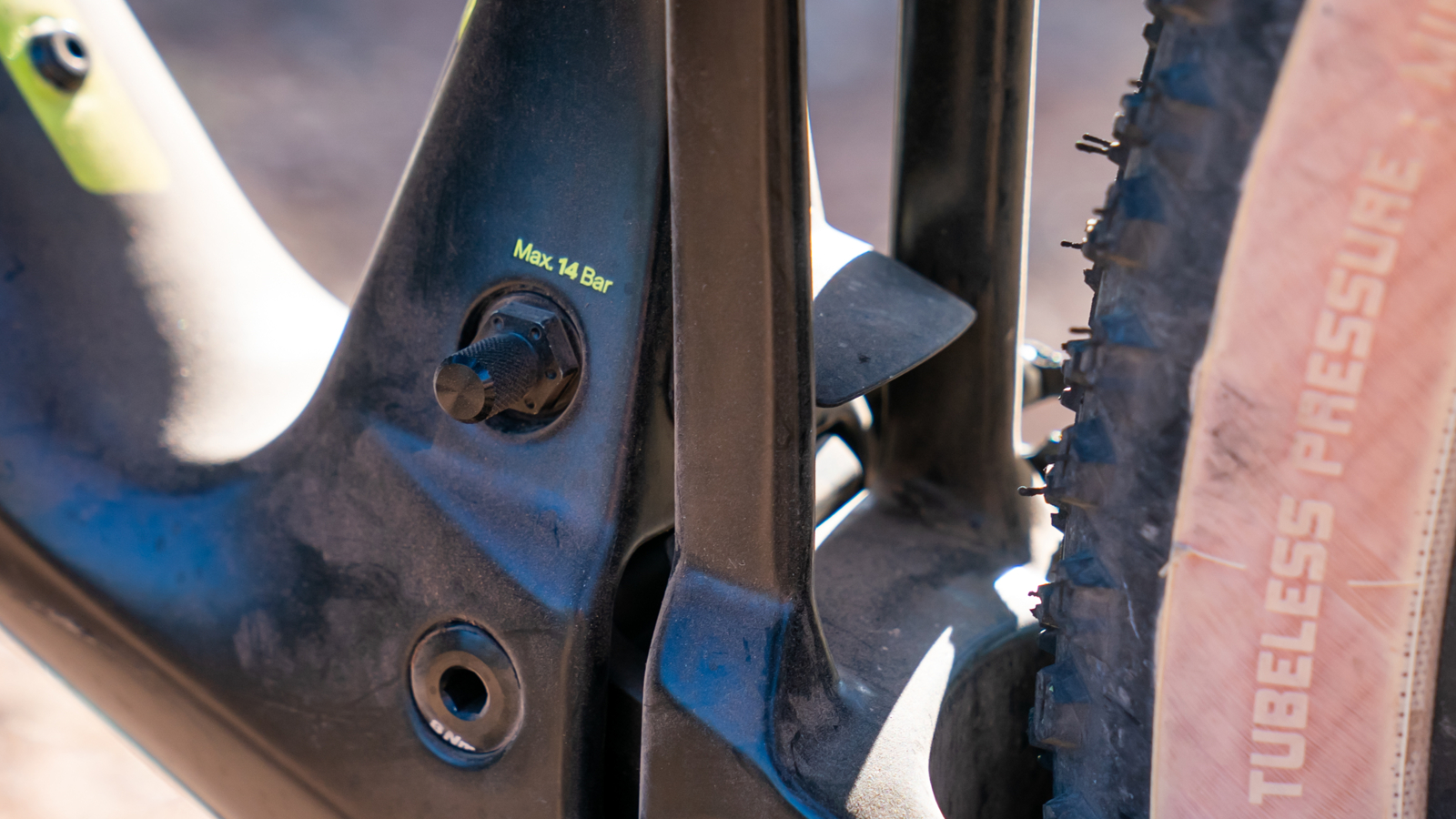
With the best dropper posts becoming standard equipment on today's XC bikes BMC looked to understand how they could be refined for cross-country racing. All dropper posts to this point have required a rider to use their body weight to push the seat down and anyone who has used a dropper post will know how this unnatural movement can be awkward on technical sections of the trail. The squat to drop the saddle also uses the same muscles as you use to pedal and when you consider that a track like Lenzerheide requires around one hundred dropper actuations, that adds up to a lot of squatting and wasted energy that could be better used for pedaling.
Rather than go down the electronic motor route, BMC opted to use air as its energy source allowing them to not only produce a more simple system but also save weight with BMC claiming that Autodrop is still one of the lightest dropper systems available and only adds an additional 130g to the frame. Air is stored in a carbon tank molded into the downtube, when pressurized to 14 bar max pressure BMC claims the dropper will have around 100 actuations.
The system only requires 4 bars to work and uses a pressure-reducing valve to supply the correct amount of air to overcome the light spring which returns the dropper to the high position, so when the system darts getting low, as long as there is at least 4 bar, it will function properly. If you do run out of air the Autodrop will simply revert back to a standard dropper and top up just a matter of pumping it back up using a Schrader valve on the frame. Additionally, BMC says that the system is simple to service requiring no special tools to give it a freshen-up.
Despite being a cross-country race bike, the new Fourstroke has a geometry that puts it among downcountry bikes rated bikes and even some trail bikes. In fact, it shares much of the geometry figures with the bigger 120mm Fourstroke LT which was released alongside the 01.
The head angle sits at a slack 66.5-degree and is paired with a 76.7-degree seat angle and a short 432mm rear center. The most radical figure though is the bottom bracket drop, which is positively slammed at 53mm. Most competing XC bikes sit in the range of 35mm to 45mm and while this could potentially increase the likelihood of pedal strikes, BMC says that course testing showed the improvement in handling outweighed this risk.
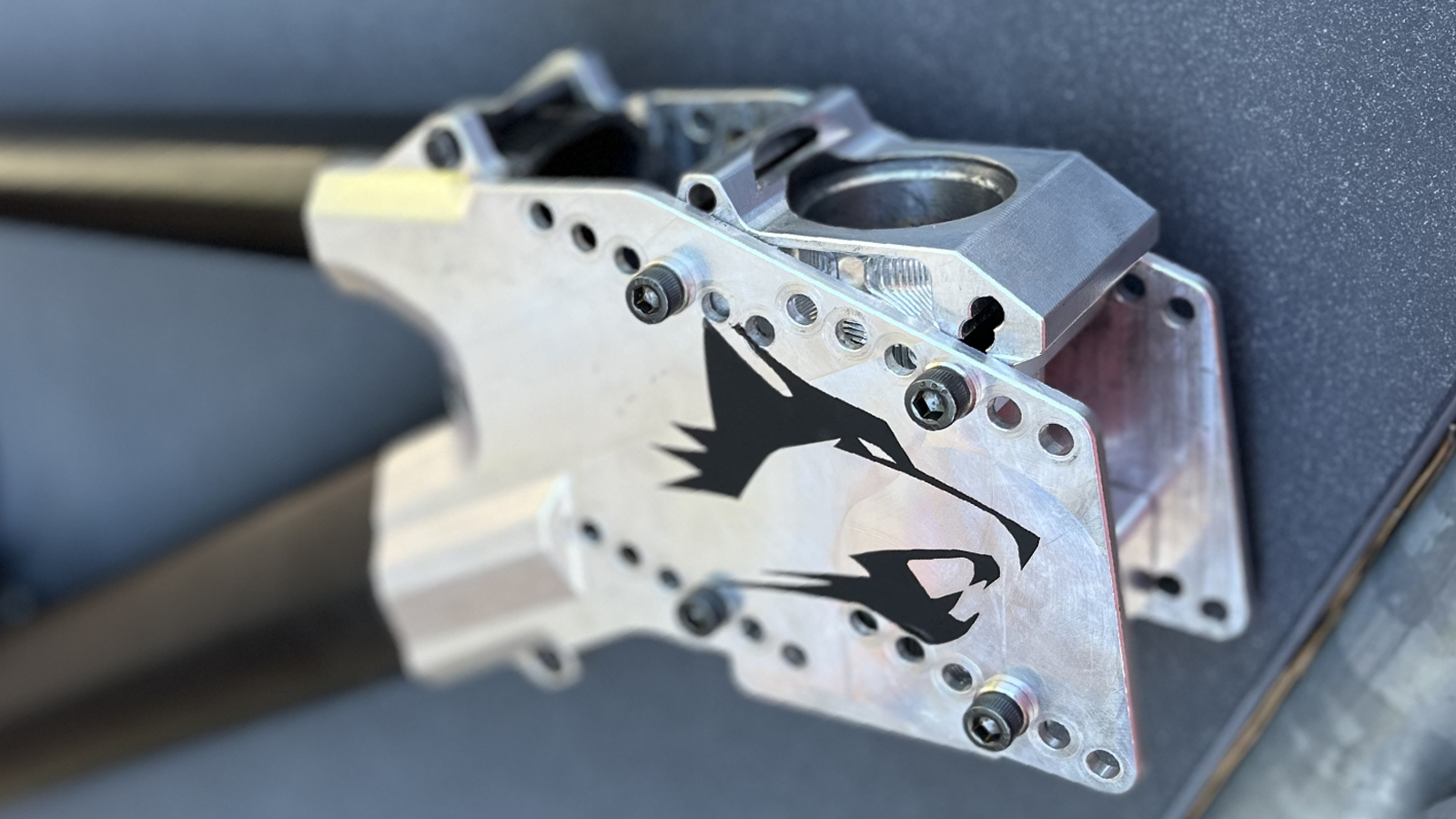
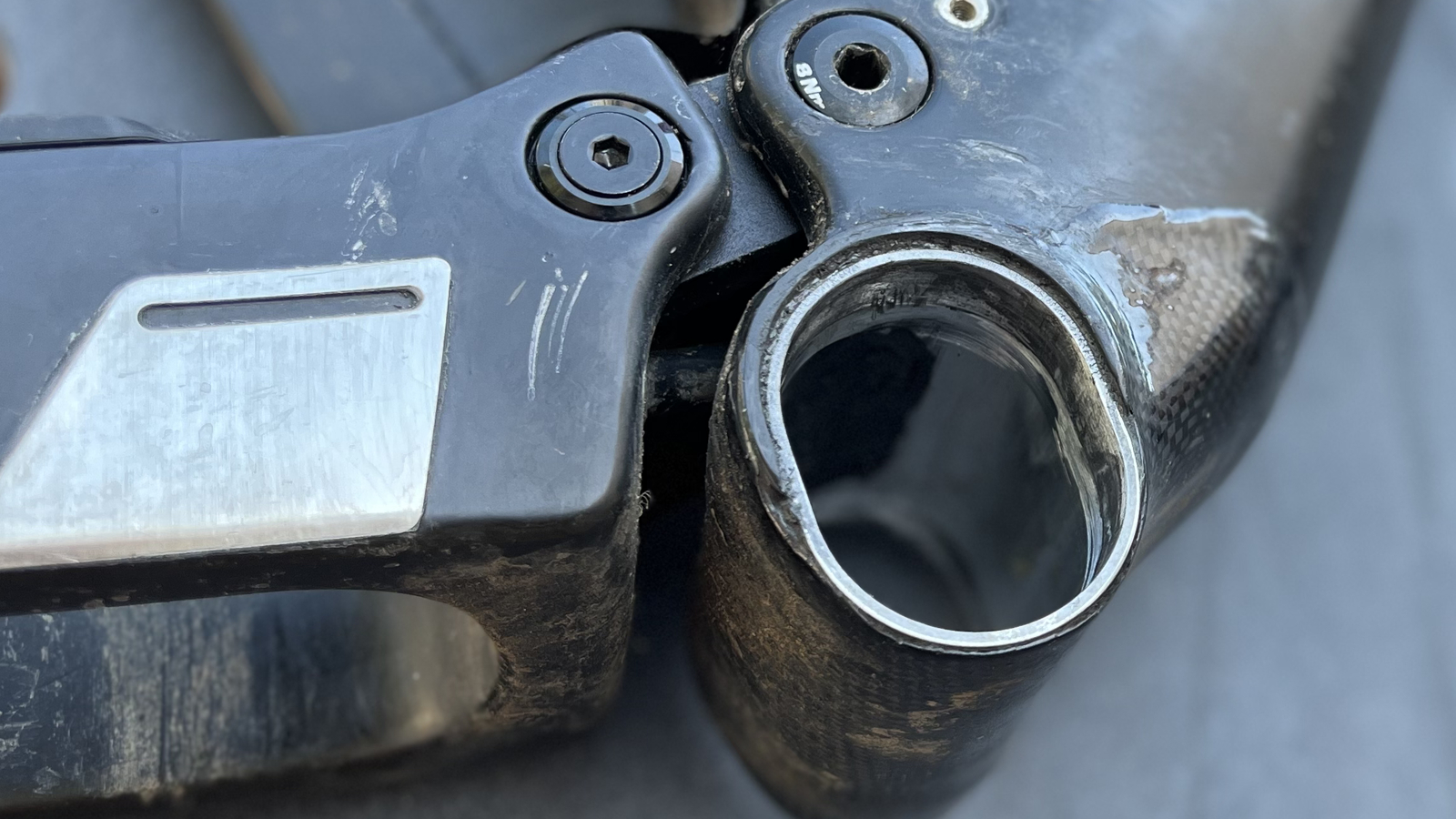
A Franken bike was used to test geo in the real world, developed by BMC’s Impact Lab a frame with an oval bottom bracket, adjustable seatpost head, and a linkage headtube to change the head angle and reach.
Flex stays are becoming a trend in cross-country mountain biking due to the weight-saving potential of one less pivot. BMC did real-world testing on the suspension kinematics too and their results indicated that its APS system was faster, claiming that the pivot allowed more advanced kinematics. Anti-squat (how much the suspension resists pedal bob) has been modified to decrease along the travel, from 160 percent to 90 percent, in a progressive manner. The suspension has a more progressive spring curve too in order to improve small bump sensitivity.
The frame itself is said to be stiffer with the Autodrop air tank in the downtube and the re-designed rear triangle which uses two vertical stays, rather than one, to increase pedaling stiffness. Inside all the internal routing is fully guided and an integrated fork stopper, chainstay protector, and the lower link mud flap protect the frame. There are also two bottle cages, both of which are mounted inline on the downtube.
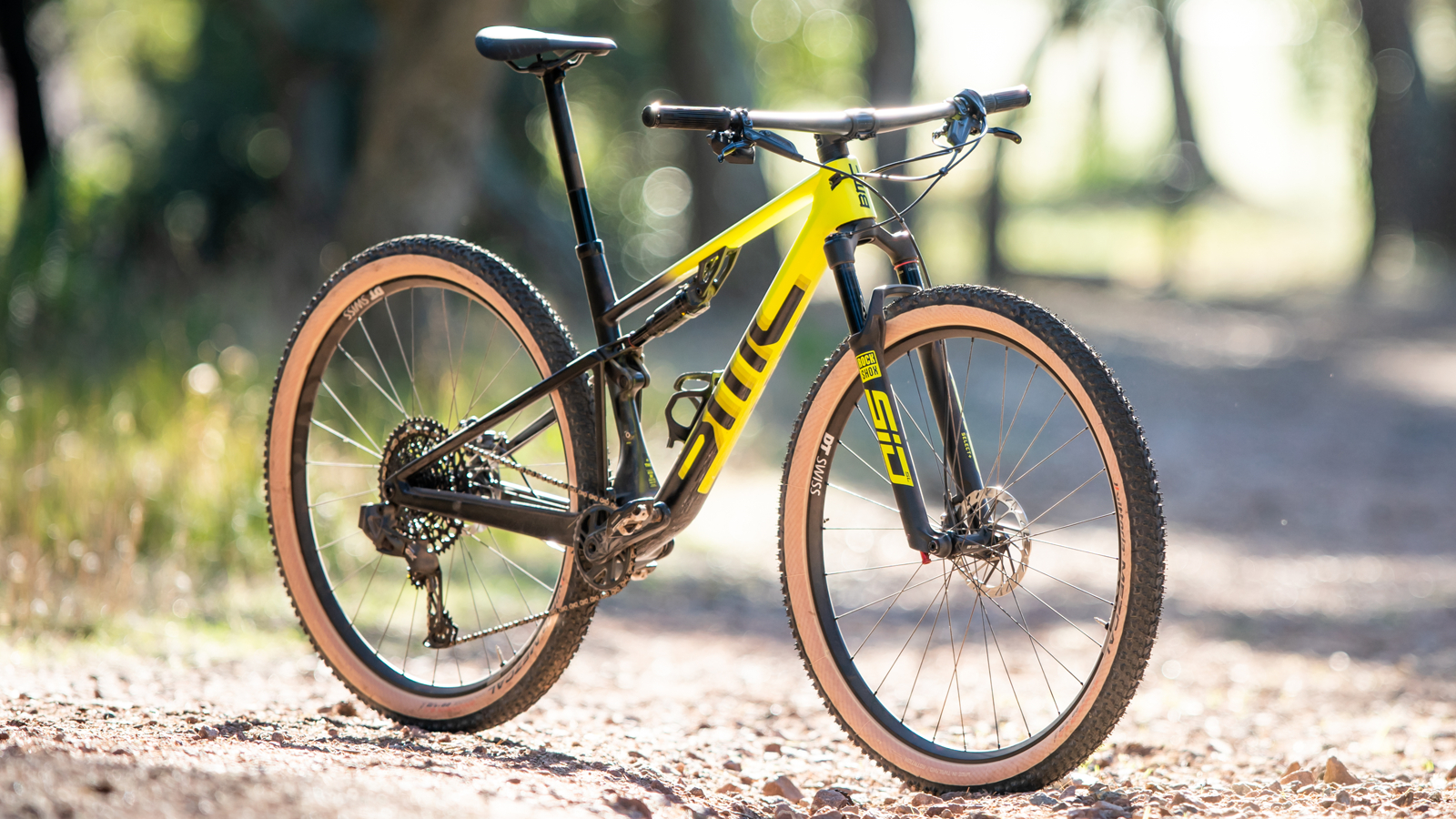
The spec of the bike is what you would expect from a bike inspired by racing and thus prioritizing weight. The svelte 32mm stanchioned Rock Shox SID SL Select+ props up the front while a SIDLUXE Select+ takes care of the rear, both of which are controlled by a grip-shift lock-out.
The wheels are DT Swiss XR 1700’s which have a 25mm inner rim diameter and are fitted with Vittorio’s Mezcal in a slightly undersized 2.35in width. SRAM’s excellent GX AXS 12sp drivetrain handles shifting and the brakes are Level TLMs with 160/160 rotors on the S-M or 180/160 on the L-XL. The cockpit is pieced together with BMC’s own MFB01 bar and MSM01 stem and there is a Fizik Antares R7 saddle.
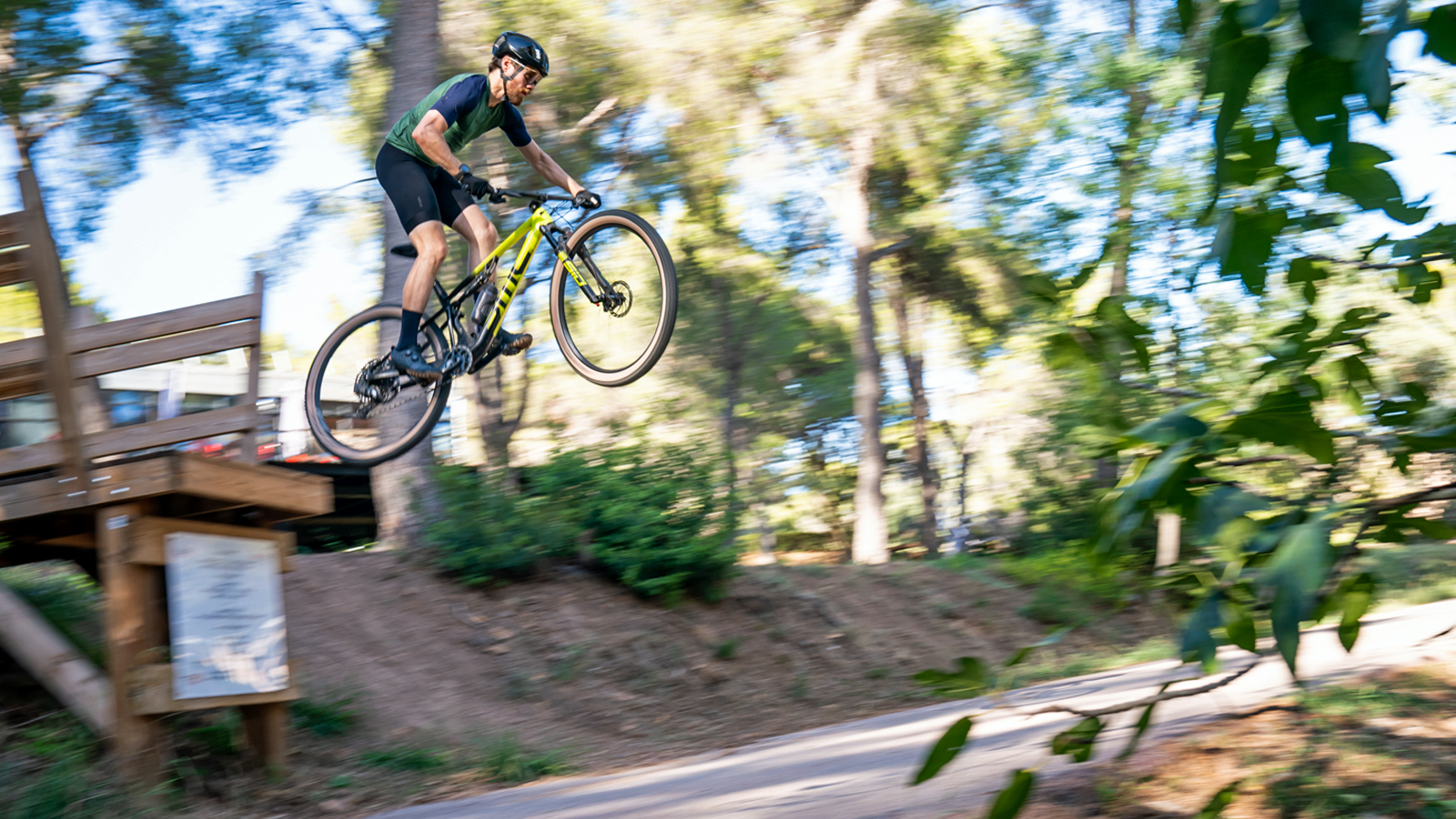
Performance
While we only got a couple of days riding aboard the Fourstroke 01, the French Tokyo Olympic test track couldn’t be a better testing location. The course is made up of super technical features as well as replica features from the Tokyo course.
Most XC fans will remember the Tokyo course for its now infamous MDVP rock drop but it's the aggressively twisting sections full of awkward technical corners that make it challenging. On such terrain, the Fourstroke has undeniable agility allowing the bike to be confidently and accurately finessed through the course.
It doesn't fall apart on the fast stuff either, the lower bottom bracket gives the bike a planted feel, and with a 20mm longer wheelbase than the previous bike it feels stable in a straight line. The updated kinematic is more forgiving too, the softer start and mid-stroke add more comfort and grip, especially at slower speeds.
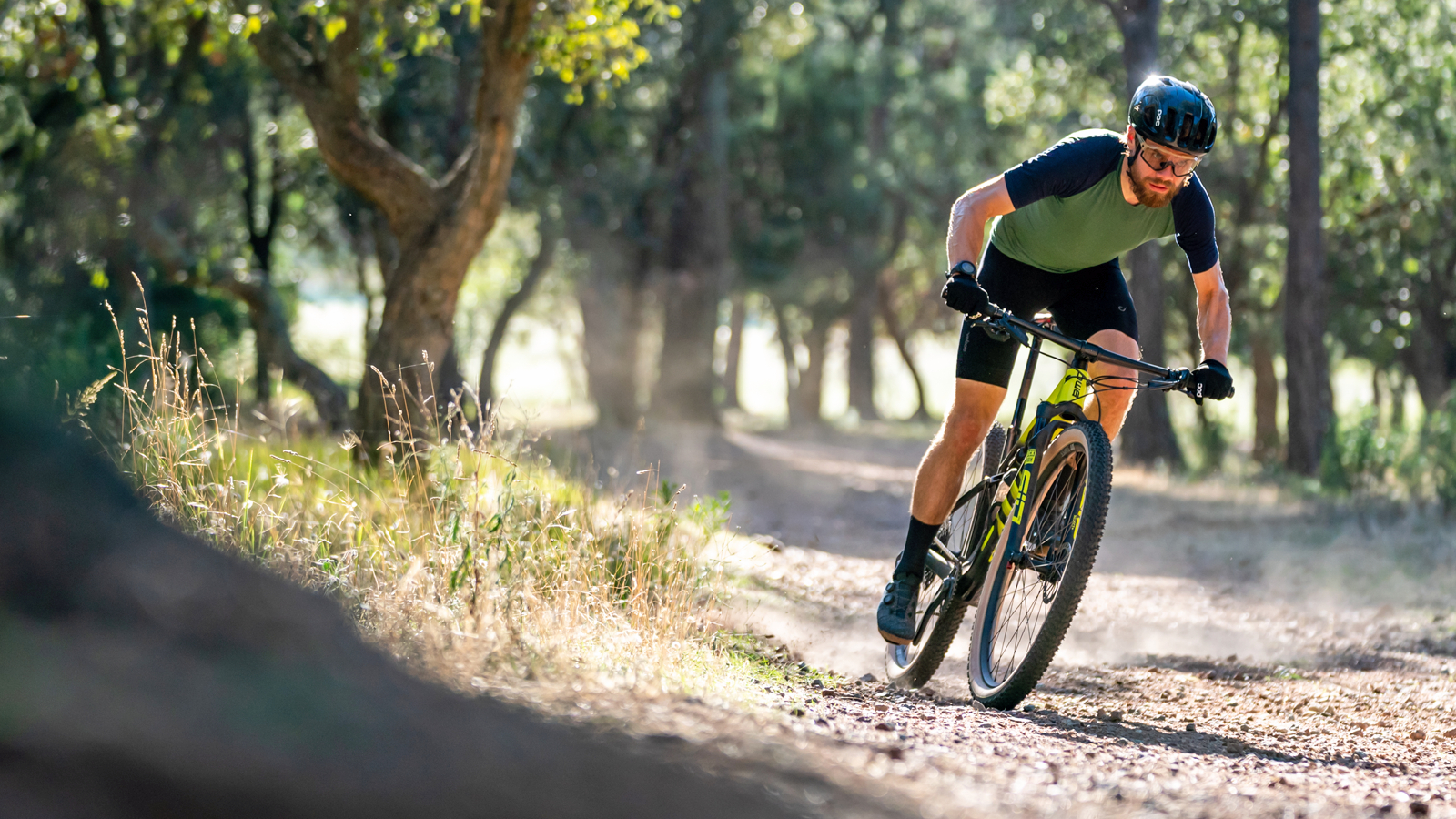
Climbing felt efficient and with decent levels of grip making the BMC a spirited climber. The bike's agility helped when sections got technical too, I did experience a few pedal strikes although, without riding the bike on familiar terrain, these could be put down to bad technique rather than the low bottom bracket.
Autodrop is a bit of a revelation. Once you have unlearned the impulse to squat you can properly attack sections safe in the knowledge you can get the saddle out of the way at the very last minute. The dropper lever is simple to use, half a push puts the seat up while a full push drops it down. In fact, there is very little to say about the whole process, it just works and it's better.
Worth noting that the 14 bar max pressure is very high and unless you have a floor pump with a lot of grunt you are either going to have to invest in an expensive new pump or accept that you won’t get the maximum 100-ish cycles BMC claim.
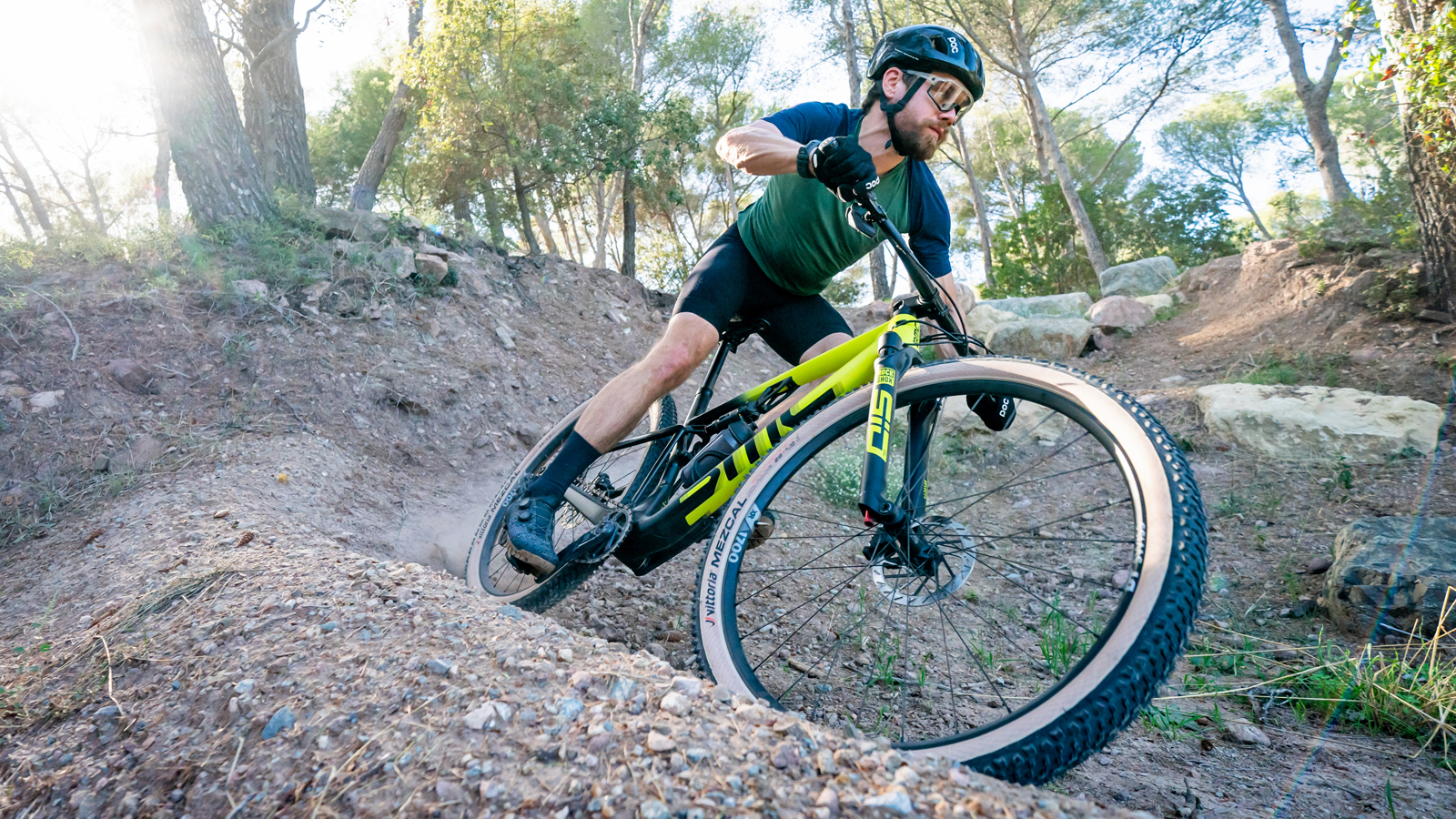
Early verdict
Whether the lightweight race specs are a deal breaker or not really depends on your riding style and trails. Some may prefer a slightly burlier build than that of the Fourstroke 01 and BMC offers the Fourstroke LT for that, albeit without Autodrop and with a touch heavier frame and componentry.
Riders who want a super capable, confidence-inspiring XC bike are going to love the Fourstroke. It's agile and punchy with no loss of composure when the trails get rough assuming you stay within the remit of the fork.
Tech Specs: BMC Fourstroke 01 TWO
- Price: $9,499 / €8,999
- Discipline: Cross-country / Marathon
- Frame: Fourstroke 01 Premium Carbon with Autodrop Technology
- Head angle: 66.5 degrees
- Seat tube angle: 76.7 degrees
- Reach: 457mm (medium tested)
- Fork: Rock Shox SID SL Select+ 100mm suspension travel, TwistLoc Lockout
- Shock: Rock Shox SIDLUXE Select+, TwistLoc Lockout
- Wheels: DT Swiss XR 1700, 25mm Inner Width
- Tires: Vittoria Mezcal 2.35in
- Drivetrain: SRAM GX Eagle AXS, 10-52 teeth 12-speed cassette
- Brakes: SRAM Level TLM / SRAM Centerline Rotors (160/160 S-M, 180/160 L-XL)
- Seat post: BMC Autodrop, 80mm travel
- Saddle: Fizik Antares R7
- Bar: BMC MFB01 Carbon, 760mm
- Stem: BMC MSM01
- Sizes: S, M, L, XL
- Weight: TBC

Graham Cottingham joined the BikePerfect team as our senior tech writer in 2020. With over 20 years of riding experience, he has dabbled in downhill, enduro, and gravel racing. Not afraid of a challenge, Graham has embraced bikepacking over the last few years and likes nothing more than strapping some bags to his bike and covering big miles to explore Scotland's wildernesses. When he isn’t shredding the gnar in the Tweed Valley, sleeping in bushes, or tinkering with bikes, he is writing tech reviews for BikePerfect.
Rides: Cotic SolarisMax, Stooge MK4, 24 Bicycles Le Toy 3, Surly Steamroller
Height: 177cm
Weight: 71kg
